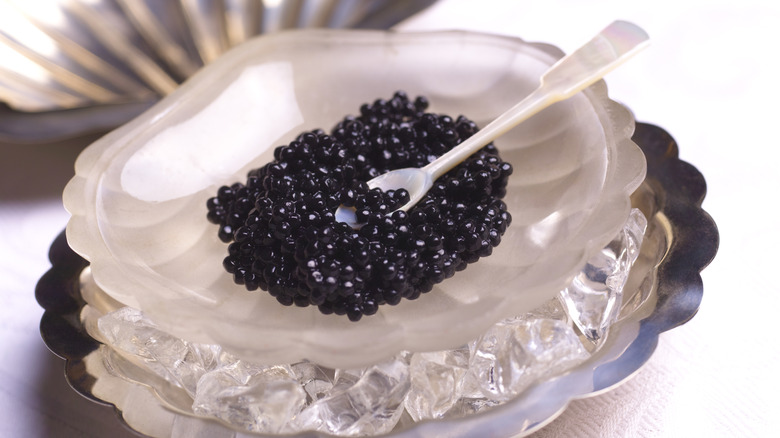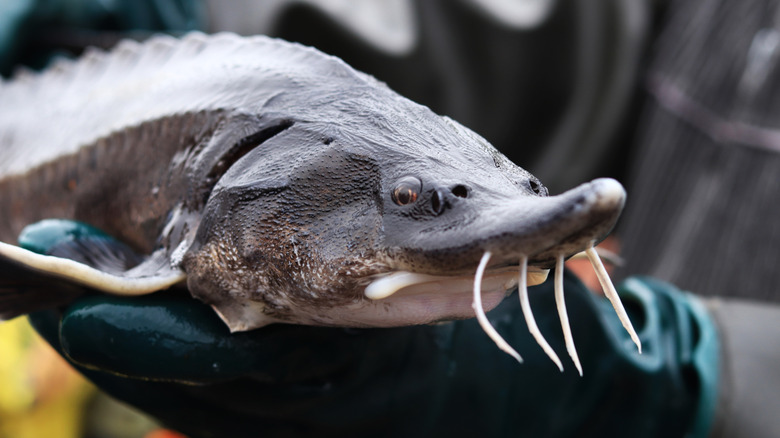How Is Caviar Harvested And Is There A No-Kill Method?
When someone mentions caviar, it's hard not to conjure images of fine dining and expensive dishes. Designed to be a salty delicacy served atop various little bites, caviar is the cured roe of fish that make for a classy dining experience. (Though caviar also pairs well with potato chips.) But, before it makes its way to your table at a restaurant or to those coveted caviar tins you can pick up at Costco, the roe must first be harvested, and there are a few ways of doing so.
The classic method of harvesting caviar unfortunately requires the fish to be killed before extracting the roe. Although ultimately resulting in the fish's death, the traditional process aims to be as humane as possible by first rendering the fish unconscious. Caviar in its purest form comes from sturgeon fish, which have a low fat content and easily freeze and fall unconscious when placed in cold water. Once unconscious, the sturgeons are quickly killed and cleaned, and their roe sacks are removed via an incision along the fish's belly before its body shuts down. The eggs are then screened on a piece of mesh to remove them from the sack membrane and finally filtered and cleaned before final packaging. Many caviar farms still use these traditional methods but now that caviar is everywhere and on everything, harvesters have invested in no-kill methods as well — potentially leading to a more sustainable farming situation.
No-kill caviar harvesting
In a quest to harvest caviar in a cruelty-free manner, as well as protect the status of critically endangered wild sturgeon, a no-kill harvesting method was created. German scientist, Angela Köhler, figured out how to milk the fish for their eggs by massaging their stomachs as they released the roe naturally. Prior to milking, the fish is injected with a protein that helps detach the roe from the egg sac so they can easily flow out of the body instead of being scooped and vetted after the fish has been killed. It is also possible to perform a C-section with a small incision on the female sturgeons, but as with any surgery, this can lead to possible infection or complication.
The no-kill process is certainly a delicate one, but it allows the endangered sturgeon to live on after being harvested — a process that is more environmentally conscious and economically sound. However, many caviar companies stick to traditional methods to preserve the original flavor and texture of the roe. Since the no-kill process involves more direct handling, the caviar can vary in consistency as a result which may be unappealing to customers. So it seems that unfortunately, the harvesting method comes down to a decision between quality of life and quality of product.


